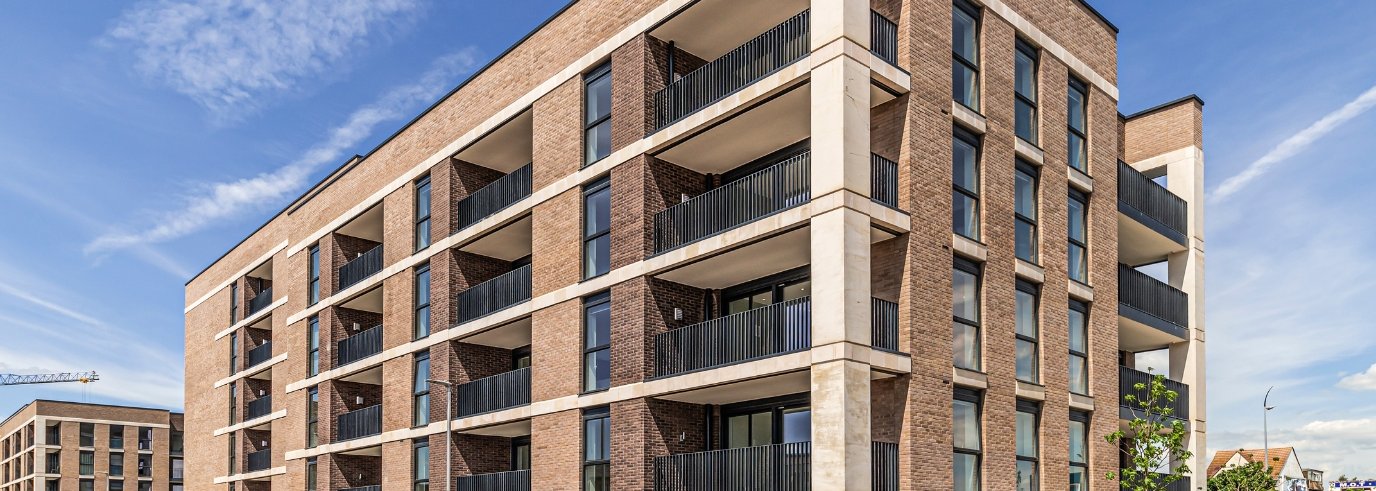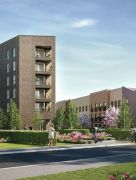
A New Way of Living
Exploring the rapid rise of build to rent.
8 October, 2021
If you’re a follower of property news, it’s possible you’ve come across the term build to rent. If you have not, you likely will soon as it is changing the essence of the rental market across our cities. While many new build property markets have suffered because of the pandemic, there has been no obvious sign of any let-up in investors’ appetite to deliver high quality rental accommodation in the nation’s cities – and particularly in London. A healthy rental market is an important feature of any functioning housing market, but the lack of supply in the UK has encouraged scale landlords to enter the market in a bid to alleviate housing supply, improve the rental experience, and deliver something over and above accommodation as part of the rental vision. While the major providers of this type of rental accommodation have so far been newer millennial-focused brands such as Quintain Living and Fizzy Living, things are about to change on a big scale.
A couple of months ago, high street darling John Lewis and Partners announced plans to build 10,000 new homes for rent on land it owns across the UK. John Lewis – a landlord. Imagine the fully kitted out JL apartments to rent. John Lewis isn’t the only big corporate to take an interest. Just weeks before the retailer announced its intentions, the UK’s biggest bank, Lloyds Banking Group, unveiled plans to launch a new business called Citra Living, with the intention of becoming a corporate landlord. In a statement the group said: “Citra Living will initially start small, with a focus on buying and renting good quality newly built properties.” Its first development to complete will be Fletton Quays in Peterborough, where 45 apartments will be available for renters over the summer months, with the company aiming to acquire around 400 properties by the end of the year. Insurance giants Aviva and Legal & General, along with investment banks Goldman Sachs and Macquarie, are already invested in build to rent developments, making the sector increasingly competitive.
The British Property Federation puts the number of build to rent homes in the UK either completed, under construction or with planning permission at 170,000 units. They expect this to reach 200,000 pretty quickly. Meanwhile, statistics published by the National House Building Council in July show new home registrations for the rental sector, including both affordable and build to rent homes, increased 17 per cent over the second quarter of 2021, to 10,957. Steve Wood, Chief Executive at the Council, said the latest quarter’s registration statistics showed the ‘remarkable recovery’ made by the house building industry after activity ground to a halt on sites in April and May last year, adding: “A 14-year high in new home registrations is quite something in the present environment. “Despite the combined effects of the pandemic and Brexit causing labour hortages and some disruption to the supply of materials, the outlook for the medium term is a positive one. Demand for homeownership is holding strong alongside significant investor interest in the growing build to rent and retirement living sectors.” The build to rent revolution isn’t just focused on the Capital. Buildings are cropping up across the country, with Leeds, Liverpool, Manchester, Sheffield, Leicester, Birmingham and Derby just a few cities to have approved large build to rent schemes over the past year or so.

Build to rent is a new kind of renting experience designed as an alternative to long-term home ownership. It has been around for quite some time and first came into being in the Capital way back in 2012 as part of the legacy programme which accompanied that year’s Olympic Games. It was part of the proposal for transforming the athlete’s accommodation in Stratford’s East Village into private rental units.
Other large developments have followed, including some delivered by Simple Life London and Grainger, both in partnership with KFH. Thousands of new quality rental properties are being created. Build to rent has been focused on delivering quality living space for communities not just ‘a short-term let’. Forget damp-ridden basements with shoddy boilers, this is purpose built, high quality rental accommodation, often offering tenants extra perks such as access to a gym, pool, roof terrace and the rest. The ability of investors of this size to deliver so much more is something of a revolution. The vast majority of private rental stock in the UK is owned by individuals, many of whom own fewer than 10 rental properties.
While the standards offered by most landlords nowadays are reasonably high, there are still exceptions. Being a landlord is becoming very big business. Build to rent is hailed as the answer to this patchwork of standards and its recent explosion comes a decade after the government first stated its intention to support larger corporate landlords into the private rented sector in the UK. Years of consultation and a global pandemic later, and the time seems finally right. Developers are therefore designing build to rent sites to suit renter’s lifestyles so the homes typically meet modern standards of living, and plenty actually exceed expectations. Build to rent developments in many areas are going one step further than delivering fantastic apartments – they are aiming at delivering community living, where residents can enjoy quality communal space and facilities. Many will also prioritise communal outside space, concierge services and an onsite building manager who is on hand to deal with problems as they arise.

Flexibility is probably the main advantage of renting this type of apartment.
Many providers offer a tiered package where you can pick and choose the bonus benefits you pay for. Tenancy agreements can be flexible. You can opt for the security of a three-year contract if you know you need to stay put, or you can choose to give a month’s notice before moving out. The risk tenants face in a flat owned by an individual is that they could be given notice to leave with just four weeks to find another suitable home. There are also several providers that don’t insist on a deposit, which can be hugely attractive to renters. Typically, when moving from one private rented flat to another you will have to pay over your deposit, which can be several thousand pounds, on your new place before you get your deposit back from your old landlord. Removing that cash block is helpful. Pre-pandemic, the communal spaces on offer in many of these developments might have seemed a bit superfluous, but with lockdowns forcing large numbers to work from home, anyone living in a shared house will know that having space outside your bedroom to work is worth its weight, even if everything is opening once again. There are also those who are less inclined to venture out as much as they used to, making the availability of onsite gyms or entertainment a perk worth paying for. Of course, rents may be marginally higher compared to the rest of the market, but there’s no need to pay a deposit. Many will wrap broadband, gas and electricity bills and utilities in to the monthly rent, and because they’re newly built, for the environmentally conscientious, energy efficiency and sustainability are more likely than not to be of a high standard.
Paul Masters leads KFH’s build to rent operation and explains how the vision for build to rent is changing rental options for people. “Build to rent goes so far beyond what we once thought of as the normal renting experience,” he says. “Our work, with brands like Simple Life London, is helping to not only offer a quality rental experience in terms of the housing available but, as importantly, helps build new communities where individuals and their families can establish long-term roots, close to good schools, local facilities and amenities.” The way the rental market works isn’t going to change overnight, but if you’re interested in hearing more about how build to rent might be the right option for you then please get in touch.

Want to know more?
Talk to our Build to Rent team today.